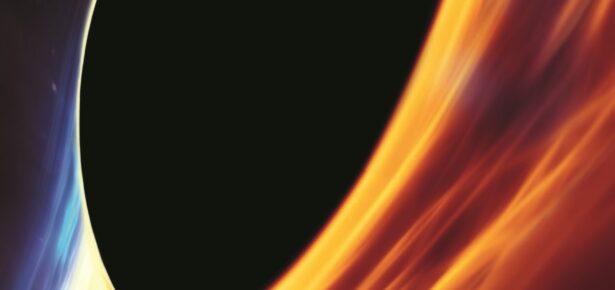
More than a century after Einstein formulated General Relativity (GR), black holes are firmly established as one of its most striking and inescapable consequences. This realisation itself arrived only after half a century and several missed opportunities. But the mathematics leaves no room for doubt – GR fully describes all non–quantum properties of black holes. GR itself has survived unscathed a very large number of observational tests with exquisite precision, notably involving stellar–mass pulsar binary systems, the detailed orbital dynamics of stars orbiting the much heavier black hole at the Galactic Centre, and observations of gravitational waves from black hole mergers.
A vast body of observations now shows that black holes are not simply a theoretical possibility, but have central importance in the real universe. Gas infall – accretion – on to a black hole is the most efficient way there is of getting energy from ordinary matter. Accretion typically converts about 10 percent of the rest-mass energy of the infalling matter to outgoing radiation, while the process that makes most stars shine – fusing hydrogen nuclei to make helium – yields only 0.7 percent.
It follows that black hole accretion must power the most luminous astrophysical sources at every mass scale. The discovery of the huge power output of quasars led astronomers to suggest that these objects contained supermassive black holes (SMBH) with masses about one hundred million times that of the sun, somehow gaining gas at high rates from an unknown source. By now we know that almost all galaxies have a supermassive black hole at their centres, and quasars are simply the phase when the hole mass is growing most rapidly, and so producing the most luminosity.
Not long after these insights, astronomers realised that a scaled–down version of the same process, with black holes of masses only a few times that of the sun, was a likely explanation for powerful X–ray emission from some binary star systems in the Milky Way. Here the source of the accreting matter is easier to understand as mass falling into the hole from the companion star. This picture related the accretion making the X-rays in these systems closely to the evolution of the two stars in the binary system. Before the X-ray stage, one of these stars must have finished its evolution by becoming a black hole, while the other eventually transfers gas to this black hole as it exhausts the hydrogen in its centre and expands to become a giant star. This brings its surface closer to the black hole, where it can be captured by its gravity. X-ray binary systems often have conveniently observable timescales – periodic orbits of a few days or even a few hours – and this explains why most progress in understanding accretion has until recent years come largely from studying them.
By comparison, our understanding how the supermassive black holes in the centres of almost all galaxies developed much more slowly. For many years there was an implicit assumption that the growth of supermassive black holes was simply a scaled-up version of the growth of stellar-mass black holes in binary star systems. This left many aspects obscure, such as how the gas need to grow the central supermassive black holes could be induced to fall from distant part of the galaxy towards a gravitationally insignificant object in their centres.
But in the last twenty years there has been a revolution in the study of supermassive black holes and their relation with their host galaxies. Astronomers found that the masses of most central supermassive black holes are directly related to two large-scale properties of their hosts. The total mass of the galaxy’s central spherical bulge of stars and interstellar gas is almost always about one thousand times the hole’s mass, and the way that stars and gas move in the bulge is also specified to great accuracy by this same mass. Since the hole’s mass is so small compared with the bulge, this cannot simply be orbital motion controlled by the hole’s gravitational pull. The discovery of these scaling relations has transformed our understanding of supermassive black holes and galaxies.
My new book, Supermassive Black Holes, discusses this revolution in detail. When the black hole mass is below the value specified by the scaling relations, it is evidently able to absorb all the gas falling close to it, and grow. But at the critical mass specified by the scaling relations, the radiation produced by accretion of just a small part of this gas drives the remainder outwards instead, colliding with the gas in the host galaxy’s central bulge. This process eventually sweeps all the bulge gas far away from the galaxy in spectacular outflows. The galaxy settles to a slow decline in activity, becoming `red and dead’ – its central supermassive black hole no longer produces much radiation, and the lack of gas in its bulge means that there is no vigorous formation of new stars which would make the bulge bright and blue.
These processes have fundamental consequences for the growth and evolution of the central supermassive black holes, and my book explores these in detail. Together, these insights are bringing astronomers closer to an understanding of the internal workings of galaxies, and ultimately of how the Universe came to be as we now observe it.
Title: Supermassive Black Holes
Author: Andrew King
ISBN: HB – 9781108488051
Latest Comments
Have your say!